
|
|

Cetorhinus maximus
The basking shark is the second largest species of fish in the world.
|
|
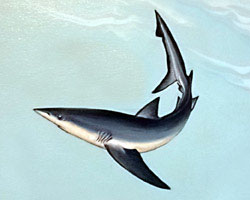
|
|

Prionace glauca
The blue shark has one of the largest ranges of all species of sharks.
|
|
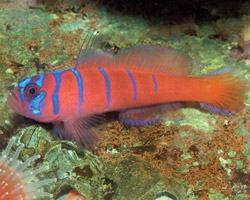
|
|

Lythrypnus dalli
These peaceful fish are often territorial with members of their own species.
|
|
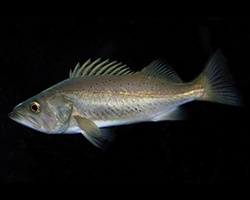
|
|

Sebastes paucispinis
The bocaccio can live up to 45 years.
|
|
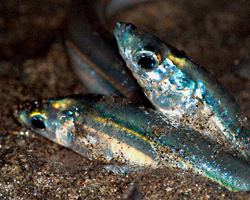
|
|

Leuresthes tenuis
Unlike other fish, grunion come completely out of the water to lay their eggs in the sand.
|
|

|
|

Paralichthys californicus
The California halibut is a flatfish with both eyes on one side of its head!
|
|
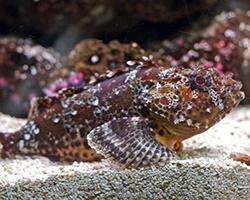
|
|

Scorpaena guttata
The California scorpionfish has venom in its spines.
|
|
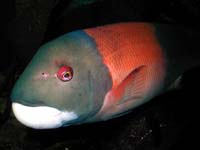
|
|

Semicossyphus pulcher
The California sheephead are all born as females.
|
|
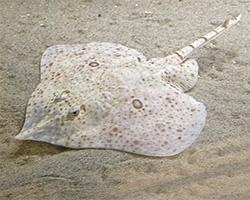
|
|

Raja inornata
The California Skate has a skeleton made completely out of cartilage.
|
|
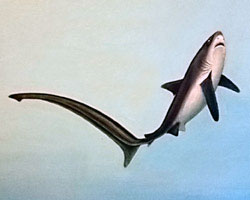
|
|

Alopias vulpinus
The common thresher shark uses its long tail in a whip-like fashion to deliver incapacitating blows to its prey.
|
|
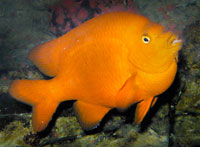
|
|

Hypsypops rubicundus
Garibaldi is the California State marine fish.
|
|

|
|

Hypsypops rubicundus
Garibaldi is the California State marine fish.
|
|

|
|

Heterostichus rostratus
The giant kelpfish can quickly change color during courtship or territorial displays.
|
|
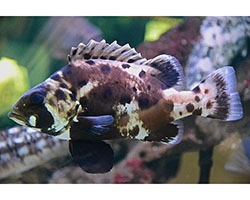
|
|

Stereolepis gigas
This fish is huge, growing over 7.5 feet long and weighing over 500 pounds.
|
|

|
|

Carcharodon carcharias
The great white shark is capable of explosive bursts of speed and has been known to jump 3 meters (10 feet) out of the water.
|
|

|
|

Heterodontus francisci
The female horn shark lays a distinctive spiral-shaped egg case.
|
|

|
|

Paralabrax clathratus
Kelp bass reproduce by spawning (release egg and sperm into the water column) and form large aggregations in the summer months.
|
|

|
|

Triakis semifasciata
Leopard sharks are bottom feeders and are named because of their stripes.
|
|

|
|

Gymnothorax mordax
This eel's favorite prey is the octopus.
|
|
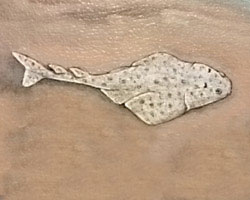
|
|

Squatina californica
The Pacific angel shark superficially looks like a ray, but is a true shark.
|
|
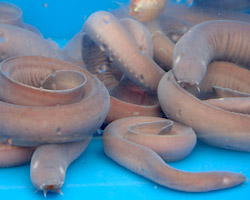
|
|

Eptatretus stoutii
Hagfish are considered to be the most primitive species of all living fish.
|
|

|
|

Merluccius productus
The Pacific hake can live up to 15 years.
|
|
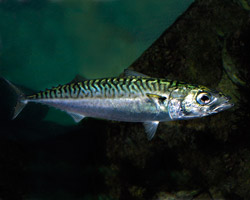
|
|

Scomber japonicus
The Pacific mackerel is also known as the chub mackerel or blue mackerel.
|
|
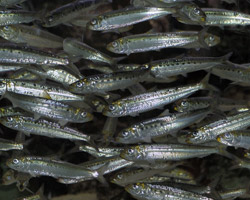
|
|

Sardinops sagax
The Pacific sardine form large schools of up to 10 million fish.
|
|
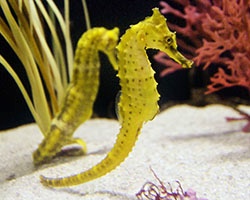
|
|

Hippocampus ingens
The Pacific seahorse reverses traditional birthing roles.
|
|
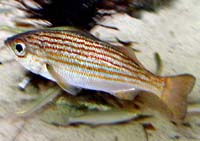
|
|

Xenistius californiensis
These fish have an up-turned mouth to better eat plankton.
|
|

|
|

Anisotremus davidsoni
The sargo is the largest of the Pacific grunts.
|
|

|
|

Isurus oxyrinchus
The shortfin mako shark is able to elevate its body temperature almost 20°F above the surrounding water.
|
|

|
|

Cephaloscyllium ventriosum
When stressed, the swell shark can “swell” by inflating its stomach by swallowing water.
|
|
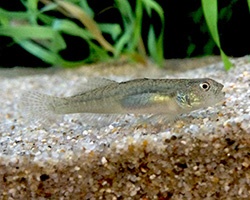
|
|

Eucyclogobius newberryi
The tidewater goby is an endangered species.
|
|
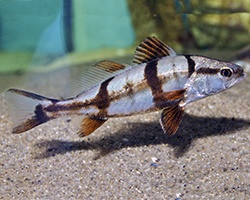
|
|

Atractoscion nobilis
The white seabass is the largest species of croaker in California.
|
|

